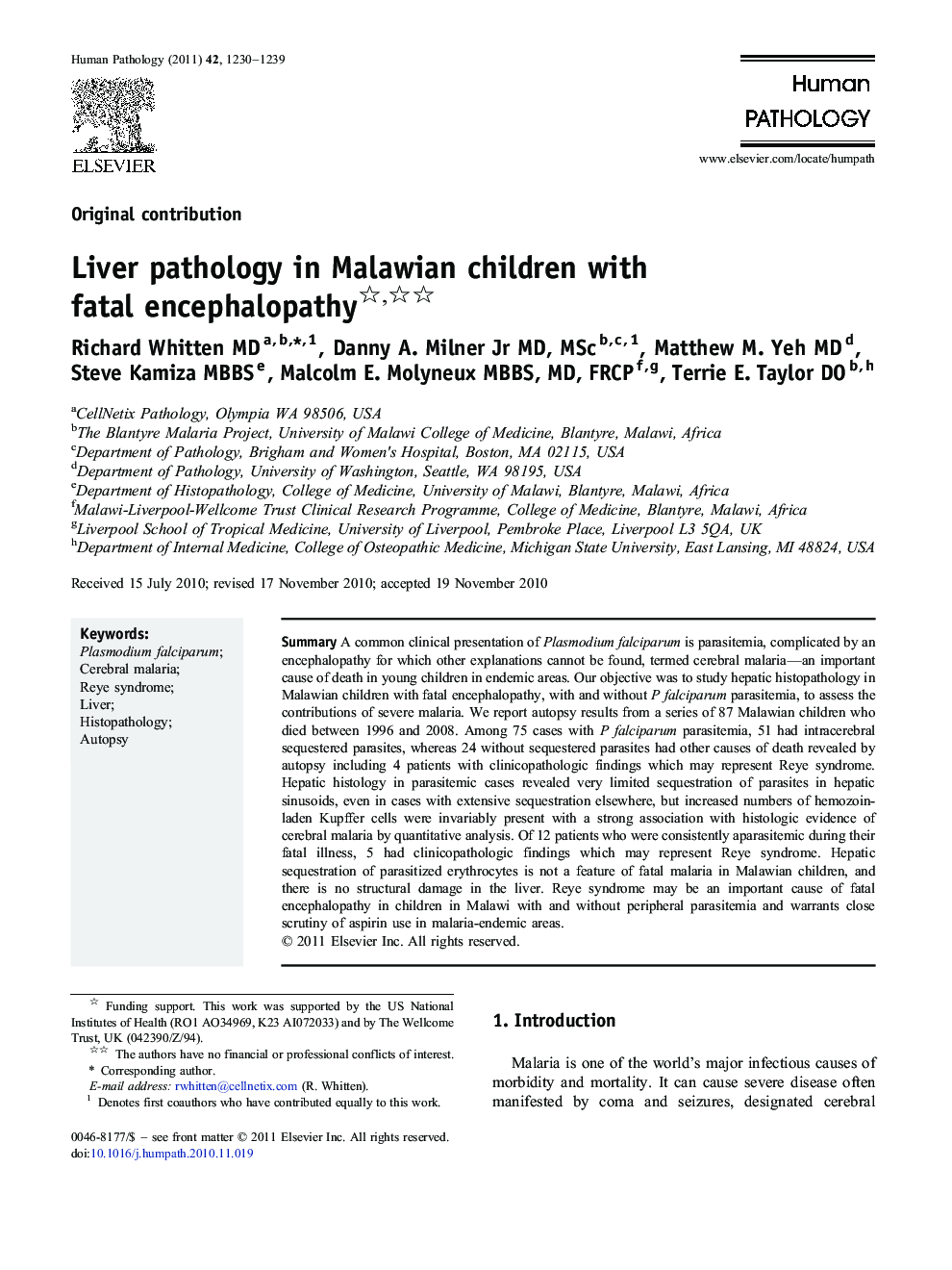| Article ID | Journal | Published Year | Pages | File Type |
|---|---|---|---|---|
| 4134050 | Human Pathology | 2011 | 10 Pages |
SummaryA common clinical presentation of Plasmodium falciparum is parasitemia, complicated by an encephalopathy for which other explanations cannot be found, termed cerebral malaria—an important cause of death in young children in endemic areas. Our objective was to study hepatic histopathology in Malawian children with fatal encephalopathy, with and without P falciparum parasitemia, to assess the contributions of severe malaria. We report autopsy results from a series of 87 Malawian children who died between 1996 and 2008. Among 75 cases with P falciparum parasitemia, 51 had intracerebral sequestered parasites, whereas 24 without sequestered parasites had other causes of death revealed by autopsy including 4 patients with clinicopathologic findings which may represent Reye syndrome. Hepatic histology in parasitemic cases revealed very limited sequestration of parasites in hepatic sinusoids, even in cases with extensive sequestration elsewhere, but increased numbers of hemozoin-laden Kupffer cells were invariably present with a strong association with histologic evidence of cerebral malaria by quantitative analysis. Of 12 patients who were consistently aparasitemic during their fatal illness, 5 had clinicopathologic findings which may represent Reye syndrome. Hepatic sequestration of parasitized erythrocytes is not a feature of fatal malaria in Malawian children, and there is no structural damage in the liver. Reye syndrome may be an important cause of fatal encephalopathy in children in Malawi with and without peripheral parasitemia and warrants close scrutiny of aspirin use in malaria-endemic areas.
